The digital marketing industry is evolving quickly, but content is still a major factor if you want to rank on Google, win social media and generate brand authority and trust. Content creators rule the online marketing landscape, and their role is only going to get more crucial.
In 2023, people need quick information. They don’t have the patience to wait around or listen to fluff. They immediately know when you’re being inauthentic or don’t know what you’re writing about.
That’s why content creators are worth their weight in gold for businesses, companies, eCommerce stores, and any person who wishes to establish their online authority and generate income from online traffic.
To put all this in perspective, GMP reportedly earns $1463 per 1000 visitors to their website, and they get how much traffic? 18.1K visitors a month! All thanks to their amazing and valuable content.

So… You Want to Become a Content Creator
Anyone with an internet connection can create content today and find an audience for it. Content creators no longer need a middle man to distribute their creations either. You can start a blog for next to nothing and create media assets with your smartphone without spending a single cent.
But will that content have any real estate value? It’s another story. A TRUE content creator wears many hats and has a firm grasp of the industry’s pulse and changing trends. It takes more than a smartphone and an internet connection to create content that converts!
Before we discuss the steps to become a leading content creator, let’s look at the various responsibilities of content creators, whether they work for hire or run their own show.
What Does a Content Creator Do?
What content creators do depends on their target audience, content type, and where they work. There are various content types, blogs, articles, videos, infographics, social media posts; each has its unique requirements. Blogs are the most famous content type, followed by listicles.
According to Planable, almost half of marketers produce more than five pieces of content and 11 social media posts per week.
Moreover, companies have their signature style and tone that allows them to connect with their audience. A stellar content creator performs a plethora of activities to create impactful content.
- Content Analysis and Ideation: You’ll be expected to cultivate a thorough understanding of the brand, its competitors, and the target audience to come up with exciting ideas for relevant content.
- Project Management: As a content creator, you may often find yourself managing the project because you understand the content plan and how it will deliver the goals.
- Content Production: Depending on your designation, you may be creating the actual content, whether it’s writing blogs or landing pages, taking photographs, creating graphics, or shooting videos.
- Editing: You might need to edit the content you or others created to refine it and make sure different elements such as graphics, videos, and written words work in tandem to achieve ROI.
- SEO: You may be responsible for optimizing the content for search engine optimization. This may include finding the keywords and arranging the piece in a way that makes it easy for search engines to rank it.
- Promotion: Your duties may include reaching out to the linkable markets and industry influencers to promote the content and build links. You may be required to prepare PR pitches and engage the audience on social media.

Photo by LinkedIn Sales Solutions on Unsplash
How to Become a Content Creator
Despite all the content being created every day, only the best content creators can cut through the noise. Did you know that content marketing is part of the strategy for 90% of organizations? Still, over 90% of their content gets no traffic from Google!
Becoming a rockstar content creator requires more than a smartphone or a blog. Content creation requires a lot more planning, strategy, and talent. It’s an art and science in itself, and if you have a passion for it, you can become an expert content creator by following the steps below.
Step 1. Educate Yourself
Whether you get a degree in content marketing or learn through internships or online courses is up to you. But you WILL need to learn the skill and techniques to create the different types of content you wish to excel in.
As discussed above, content creation is a multi-faceted job. It requires you to have adequate knowledge of marketing, SEO, journalism, as well as various other soft skills.
- You can take degree courses or enroll in certificate programs for marketing, public relations, or journalism, depending on the type of duties you’d like to fulfill.
- If you wish to become a writer, photographer, graphic designer, or video editor, you can acquire those skills through university degrees.
- You can learn many soft skills required to operate in an online space through online courses on Teachable, Udemy, and Google Academy.
For example, you can learn to optimize your content and market it to the online audience through our content marketing and SEO training.

Step 2. Find Your Niche
Niching down is so important whether you’re going the freelancer route or joining an agency. It’s better to be master of one trade than be a jack of all. People look for authenticity. They want to listen to experts and trust recommendations only from thought leaders. That’s why micro-influencers are so successful.
Sure, choosing a niche is hard. It requires honest introspection, but the rewards are enormous. You wouldn’t need to live a life you constantly wish to take a break from. You’ll be creating content about topics you like and have expertise in.
Here are a few ways you can settle on a niche:
- Choose a domain related to your studies or expertise.
- Your niche can be related to a hobby you’re passionate about.
- You can also choose a niche you think you’ll enjoy exploring.
Whatever options you come up with, study their market demand and jump right in. Since you’ll have a more profound knowledge of your niche, you’ll be able to establish your position in the industry relatively quickly.
Sticking to a niche means losing out on clients from other niches. And that’s okay. You don’t want to create content around those topics anyway!
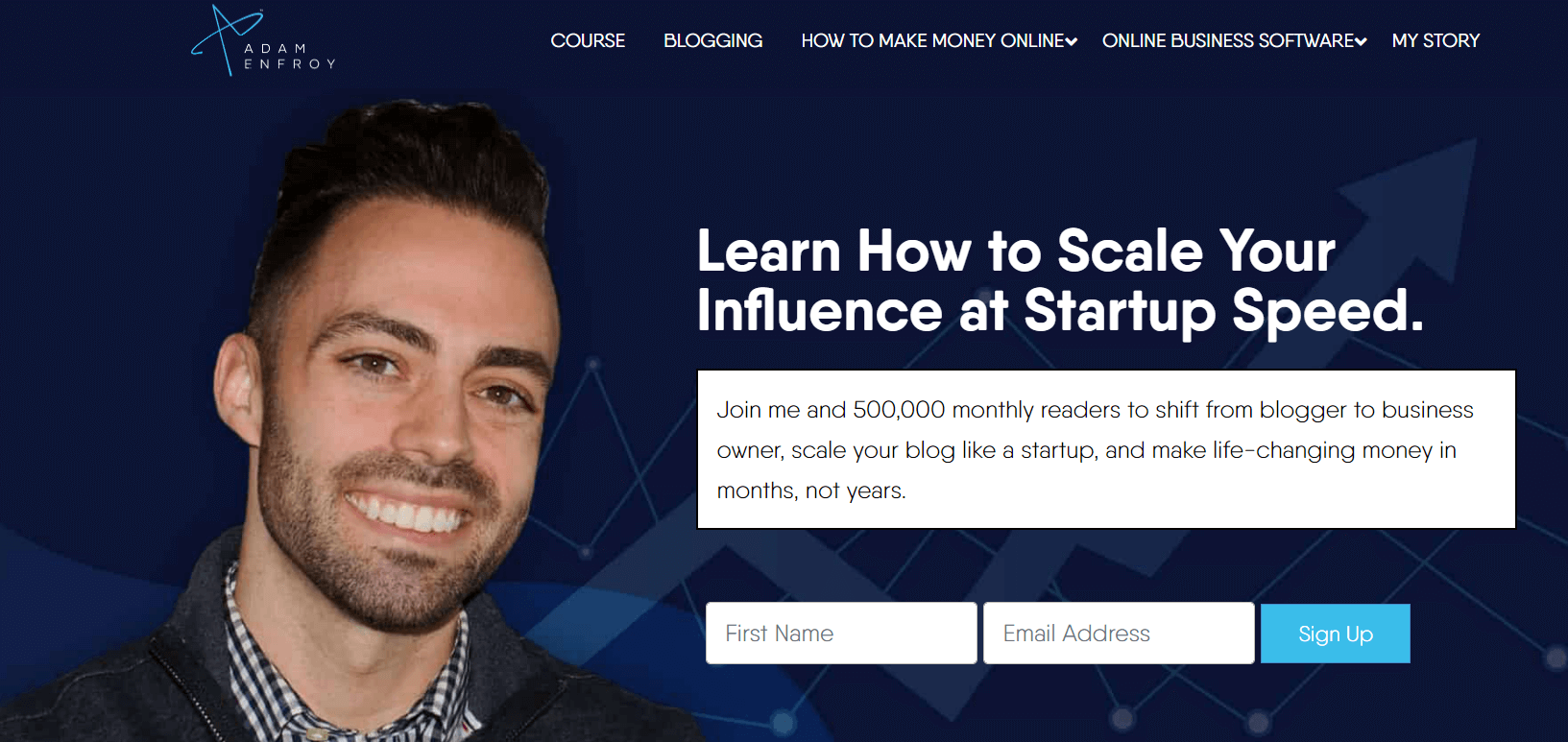
For example, Adam Enfroy is a famous influencer who has taken it upon himself to help bloggers scale and monetize their blogs quickly through his online course Blog Growth Engine. Sure, anyone looking for Facebook or Instagram marketing advice won’t be buying his course. But, would he want them to? Of course, not!
Niching down is a great way to filter in your dream clients from those who aren’t a great match!
Step 3. Mold Your Voice for Your Audience
Just like the niche, you need to be clear about your target audience and the voice they resonate with. For example, you may choose to create content related to healthy food.
However, there are many types of healthy food and many kinds of people who follow it. Some are vegans, some follow the keto diet, while others limit themselves to organic food only.
Zeroing on your target audience allows you to mold your voice and content according to their preferred voice and tone. Here are a few tips to resonate with your target audience.
- Make sure to add your personality to your voice.
- Stay true to yourself. People love genuine content.
- Keep it simple. Big words may sound impressive, but save them for creative writing pieces.
- Be honest, natural, and persistent in your communications.
Over time your voice will become your identity and help you connect with your audience. There’s so much competition in the online arena in every niche. The thing that will make you stand out from the crowd is your VOICE!
When your audience feels like, ‘hey! this person gets me and speaks my language,’ they become responsive to your content.
As your career advances, your audience, your tribe, will become a source of inspiration for you to keep going, explore your niche further and keep creating excellent content.
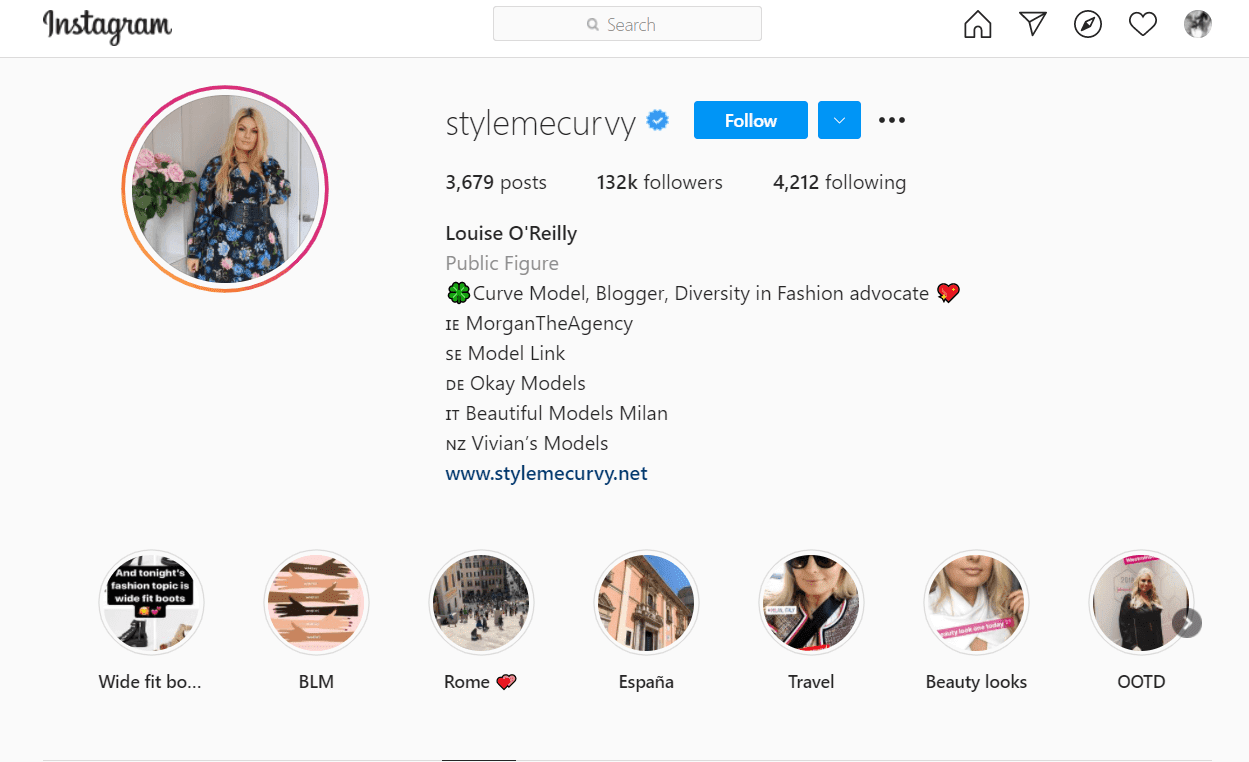
For example, Style Me Curvy is a body-positivity brand for unapologetic women of all shapes and sizes. The brand’s voice is compassionate, and the images are precisely in line with what the brand stands for, celebrating all body types without judgment. They have a dedicated following of 132K on Instagram and a single post gets thousands of likes!
Step 4. Know Your Industry In and Out
Now that you’ve found your niche make it a point to understand your industry’s past, present, and future. You don’t need a vague familiarity. You need to grasp the depth of your industry if you wish to establish yourself as an expert content creator.
Familiarizing yourself with the past and present market trends will allow you to create a forward-thinking strategy for your career. You can set up Google Alerts for niche-related terms to keep up with industry news and use Google Trends to find market trends and compare them.
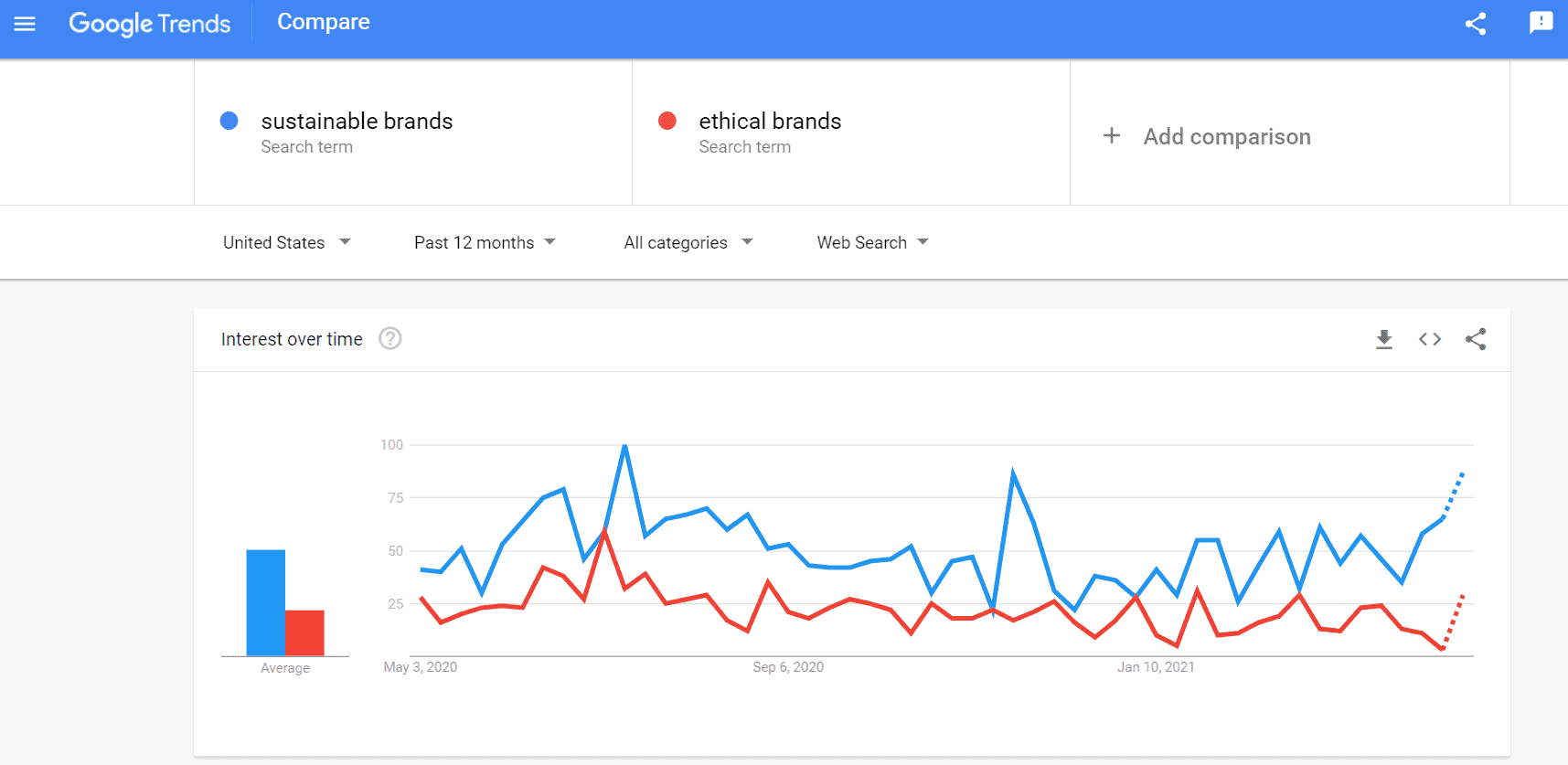
Here are a few tips to keep your industry knowledge up-to-date:
- Use content curation tools for a reliable stream of content from leading niche sources.
- Follow industry influencers on social media to catch live news.
- Schedule a reading time and take notes as you read.
As your career advances, expand your horizon and keep informed about the trends in related industries too. For example, if you’re an environmentalist, keep an eye on the sustainable lifestyle industry and create cross-platform content to broaden your sphere and keep your audience engaged and well-informed.
Step 5. Practice Everyday
Practice makes perfect, it may sound cliche, but it’s a universal truth. Whether you wish to write blogs, make videos, or take photographs, it takes patience and practice to refine your skill.
You don’t need to have clients for practicing content creation. Just create content and add the best pieces to build your portfolio. This practice content doesn’t have to be posted for all to see at first if you don’t feel like it, but it’s meant to explore your artistic skills and creativity. Practice also allows you to identify your limitations and overcome them.
Here’s how you can make time for practice:
- Allocate a portion of the day or the week to practice for a specific duration.
- Set a weekly or monthly goal and work toward it daily.
- Schedule your practice sessions at different times of the day to find the time when you’re most productive and creative.

Photo by Dollar Gill on Unsplash
These practice sessions are an excellent opportunity to understand your strengths and weaknesses, likes and dislikes. Which topics excite your imagination the most, and which content types are your least favorite.
According to Orbit Media, content creators who produce more content report greater chances of success.
Step 6. Give Actionable Advice and Examples
Given the amount of data being created every day, your content REALLY needs to stand out to get any traction. With so much free information floating around the web, people aren’t interested in generic content anymore.
When users search the internet, they’re looking for direct answers to their specific questions. They don’t have the patience to read a lengthy blog or watch a video in anticipation of getting the answers. They probably already visited a couple of other blogs and already knew everything except the information they’re looking for.
So, whether you write a blog or create a video, reach your point quickly. Answer the searchers’ questions directly early on in your blog. Give clear, actionable advice or steps to perform a task depending on the query.

For example, this blog by Ahrefs doesn’t beat around the bush and tells you the exact steps required to submit your website to Google.
Remember, people don’t necessarily consume your content because they are looking for advice specifically from you. They’re simply looking for answers to their questions. If your content answers them, their search will be over, and they’ll remember to come to you directly in hopes of getting quick info the next time.
Step 7. Communicate Clearly and Positively
As a content creator, you’ll be working as a part of a team most of the time. Whether you chose to work with an agency or as a freelancer, you’ll need to communicate with other people to create an impactful piece of content.
If nothing else, you will need to talk to the clients to understand their requirements better. You might need to convey those requirements to fellow writers, editors, graphic designers, and other people involved in the content creation process.
If you’re not a communicative person naturally, you can practice good communication skills.
- Learn to communicate clearly.
- Whenever in doubt, prefer over communication.
- Keep criticism minimal, constructive, and positive.
- Keep clients and teammates in the loop about any changes and expectations.
- Set reasonable expectations.
Another way to improve collaboration is to identify the best way you and your team communicate. Some people are better at verbal correspondence on the phone or via Zoom. Others prefer emails and IMs.

Photo by KOBU Agency on Unsplash
Step 8. Stay Current
Your connection with your audience only is as good as your latest content. It’s engaging and interesting for them as long as it’s relevant. Evergreen content has an important place in digital marketing strategy, but you can’t rely on it to engage your audience consistently and repeatedly.
It isn’t enough to understand the past and present of your industry. You need to have a finger on the market pulse to foresee coming trends. You have to understand what your audience is looking for next and become one of the first to create that content.
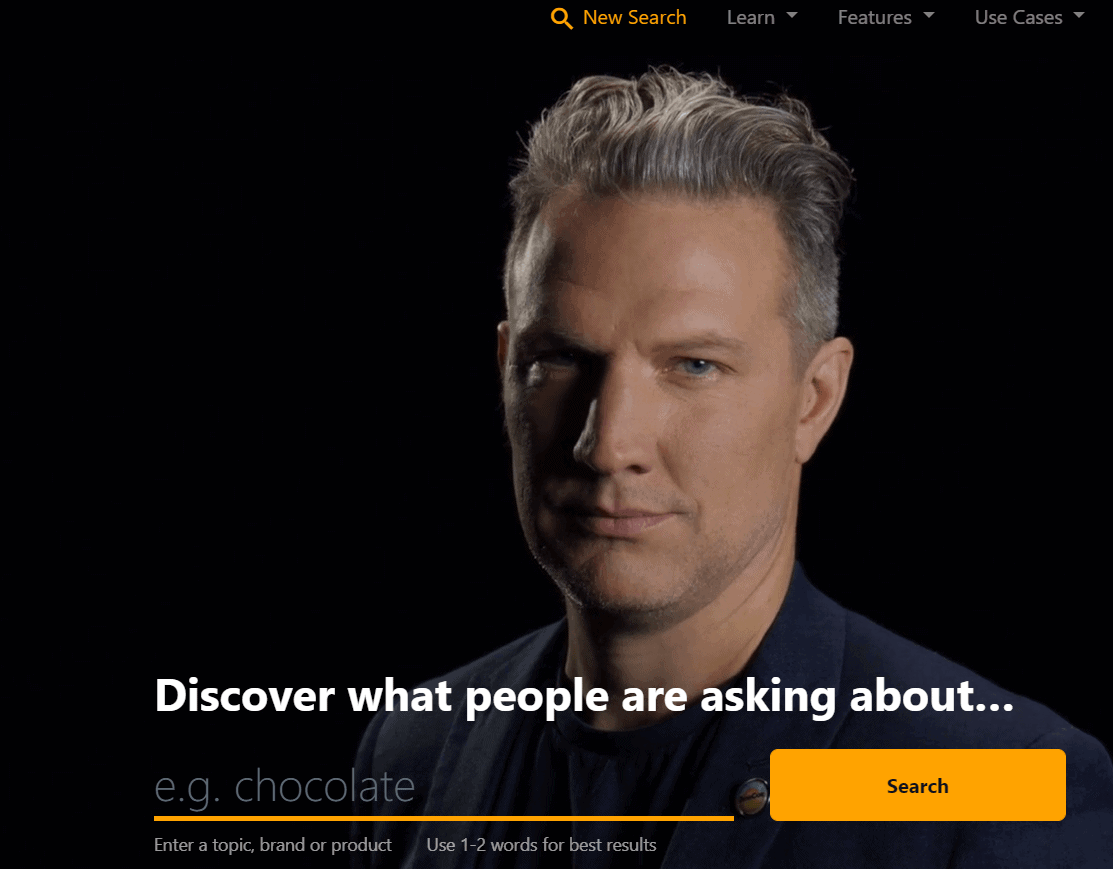
It’s not difficult to keep up with industry trends. Here are a few tools you can use to keep informed about your audience’s pain points, desires, and aspirations.
- Ahrefs: Keyword analysis is our tool of choice for finding trending topics and their related keywords. You can choose from topics with high search volume and keep an eye on your competitors’ content.
- Answerthepublic: An incredible tool to understand what people want to know about a particular topic. Once you finalize a few issues of interest, check them in Ahrefs for demand and start creating content.
- Digivizer: This tool allows you to analyze your content performance cross-platform, including paid and earned social media accounts. It not only delivers you insights about current data but also recommends the next best steps you can take to improve your stats.
- Google Surveys: You can determine where your audience stands on a specific issue by using Google Surveys. You can also perform customer surveys to understand your customer’s experiences, pain points, and expectations. Content created around the collected info can be used to drive huge interest and engagement.
For example, this content was prepared after surveying people about their sunscreen habits. Then, an informative post backed by stats was created and used to make a cool infographic for promotion.
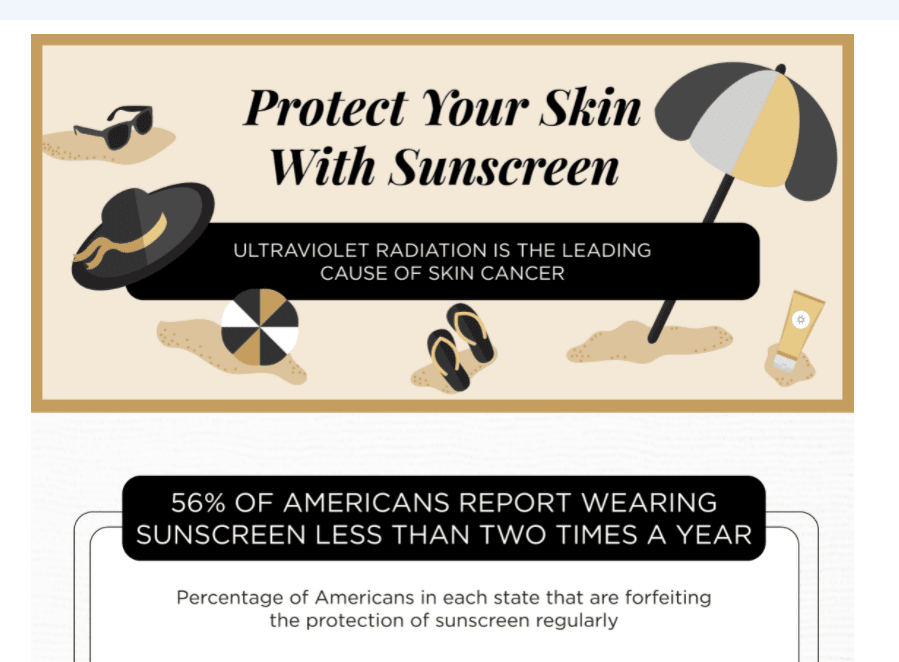
Step 9. Create Content for User Intent
Google has improved its algorithm to the point where it guesses pretty exactly what people want to know when they search for specific search terms. This insight allows it to serve people precisely the content they’re looking for, even if they don’t use the exact keywords targeted by that content.
As a content creator, your copy must fulfill the user intent for that search if you hope to rank for it. There are four types of search intents.
- Informational: Most people in the awareness stage of the sales funnel are looking for information. Such searches have an informational intent. People are either looking to get information about a topic or find exact steps to perform some task.
- Commercial: These search terms have a buying intent, but the user is at the consideration stage of the buyers’ journey. The searcher is still comparing products and hasn’t entirely made up their mind yet.
- Transactional: These search terms have a strong buying intent. For example, people looking to buy a piano will want to know the price or location of the store. They’re at the final stage of their buyers’ journey.
- Navigational: These search terms involve brand or company names when people are trying to reach specific websites.
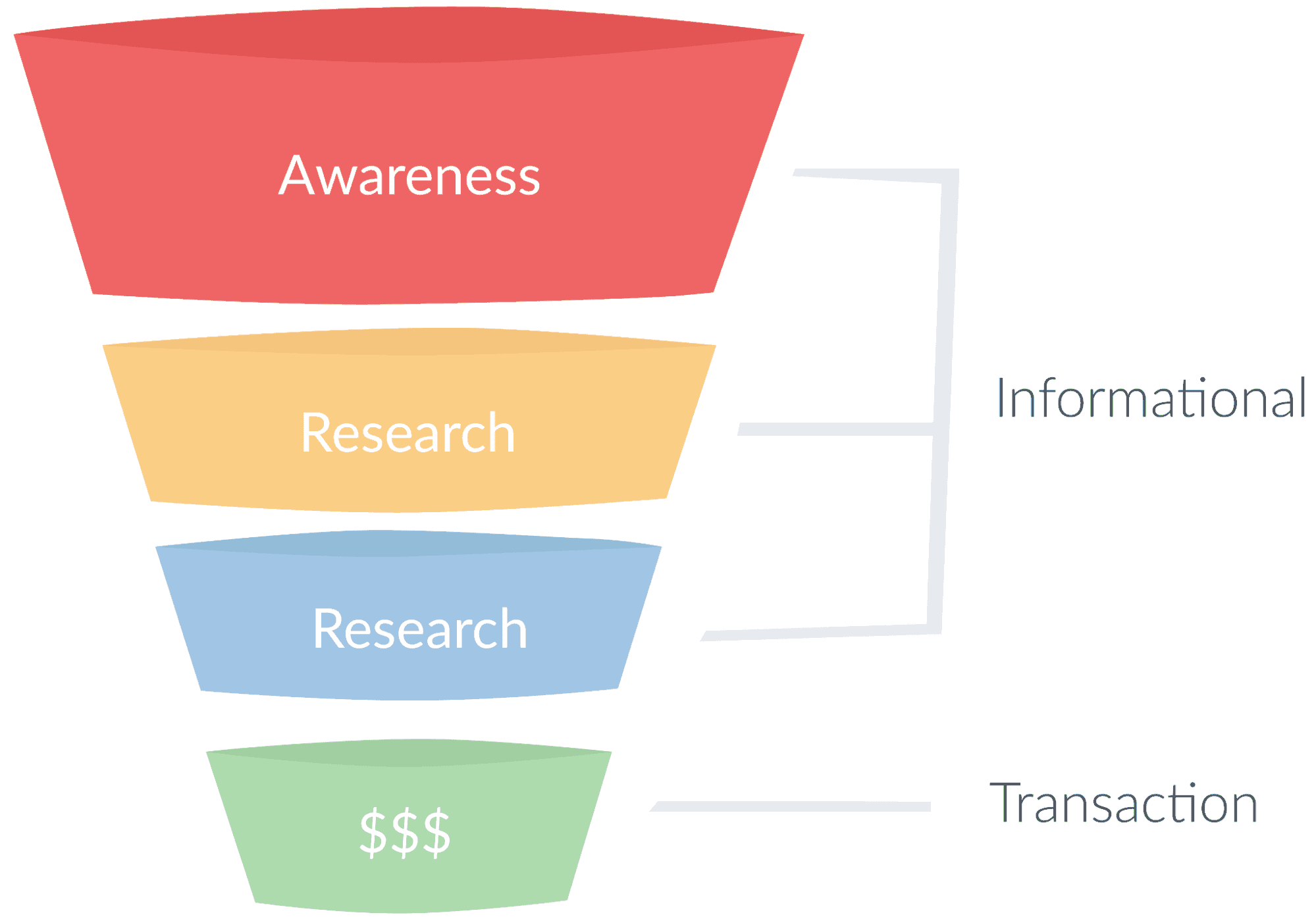
Step 10. Refine your skills
Being a content creator is a never-ending learning adventure, especially if you want to open up new and better opportunities for yourself. Always keep an eye on the latest and emerging technologies and skillsets that may come in handy in your career.
Many new facets can open up as you climb the ladder of success. For example, if you’re a content writer, videographer, or dabble in some other art form, you can learn the following skills to improve your skillset.
- SEO
- Tracking and reporting
- Strategy building
- Web development basics
These are valuable skills that allow you to optimize your content for better reach and lead generation. Possessing those abilities can also bring exciting opportunities your way. In the ever-changing online landscape, keeping on top of the latest trends is a must.
You should definitely set aside some time for personal growth. Follow industry leaders and keep up with the latest tools, technology, and tips to become a valuable asset for your clients.

Photo by Firmbee.com on Unsplash
Step 11. Use Social Media To Connect With Your Audience
Your social media presence is highly crucial because it’s where your audience hangs out.
What better place to find out what your audience wants and thinks about your content!
People share so much on social media about themselves, their joys, sorrows, dreams, aspirations, struggles, achievements, and losses. It’s all there for someone willing to look.
Here are a few benefits of engaging your audience in discussions on social media.
- You can ask them important questions.
- You can understand their point of view.
- You can offer them personalized solutions.
- You can ask them what they think of your brand.
- You can offer incentives through giveaways, discounts, or free resources.
Above all, your connection with them on social media makes you memorable. It also gives you a unique perspective of their lives. You can use all this information to create tools, tutorials, guides, courses, webinars, and much more to add value to their lives.
Imagine the impact your content can have on them. Because you know them so well, your content will fit them like a perfectly tailored suit!
Now, it all may seem like a hell of a lot of work, but in reality, it’s not. Many social media management tools allow you to listen to your audience and respond to them quickly. You can also hire virtual assistants or social media managers to respond to your audience on your behalf and let you know of any queries that need your personalized response.

Photo by Austin Distel on Unsplash
Step 12. Network Online and Offline
No matter which niche you choose, networking is crucial for your business and career development. The right connections can open up exciting and unexpected avenues of success for you.
Connecting with the people in your industry exposes you to new ideas. It can refresh your perspective and give you insight into others’ experiences.
You should join virtual meetups and attend offline conferences whenever you have the time.
Don’t consider them as a co-curricular activity but a vital part of your work. The trick is to find conferences and meetups that interest you and are beneficial for your career goals. Three or four conferences and maybe a virtual meetup every now and then should be enough to get you the attention and connections you require.
Here’s how you can get the most out of the connections you make:
- Connect with everyone you meet on LinkedIn. Create a database of all the potential referral sources, clients or collaboration partners. Add their contact details and reference notes to remember them.
- Send them personalized follow-up notes to start building a relationship. (Don’t ask anything of them yet).
- Engage with their content often.
- Once an opportunity arises, you can leverage your relationship with them for a mutually beneficial goal. You might even be surprised when they reach out first!
- Reciprocate. Can you help them out in any way? Do it!

Photo by Matthew Osborn on Unsplash
Step 13. Focus on Personal Branding
Whether you work for an agency or as a freelancer, don’t be a ghost behind the content. Make sure to build your personal brand as well. As a content creator, you have so many ways to put yourself out there.
Depending on your favorite mode of artistic expression, you can create blogs, vlogs, podcasts, or just project yourself through social media channels, Twitter, Instagram, Facebook, or Youtube. Of course, an up-to-date Linkedin profile is fundamental.
Personal branding is crucial for your career and business development. It reinforces your expertise and authority in your chosen niche. Here’s how you can establish your personal brand.
- Research your niche and analyze peer brands.
- Work up a unique voice and style.
- Create content with your target audience in mind.
- Post consistently on a regular interval.
- Engage with your community.
For example, Nas is a famous content creator who has created his entire business around his personal brand.
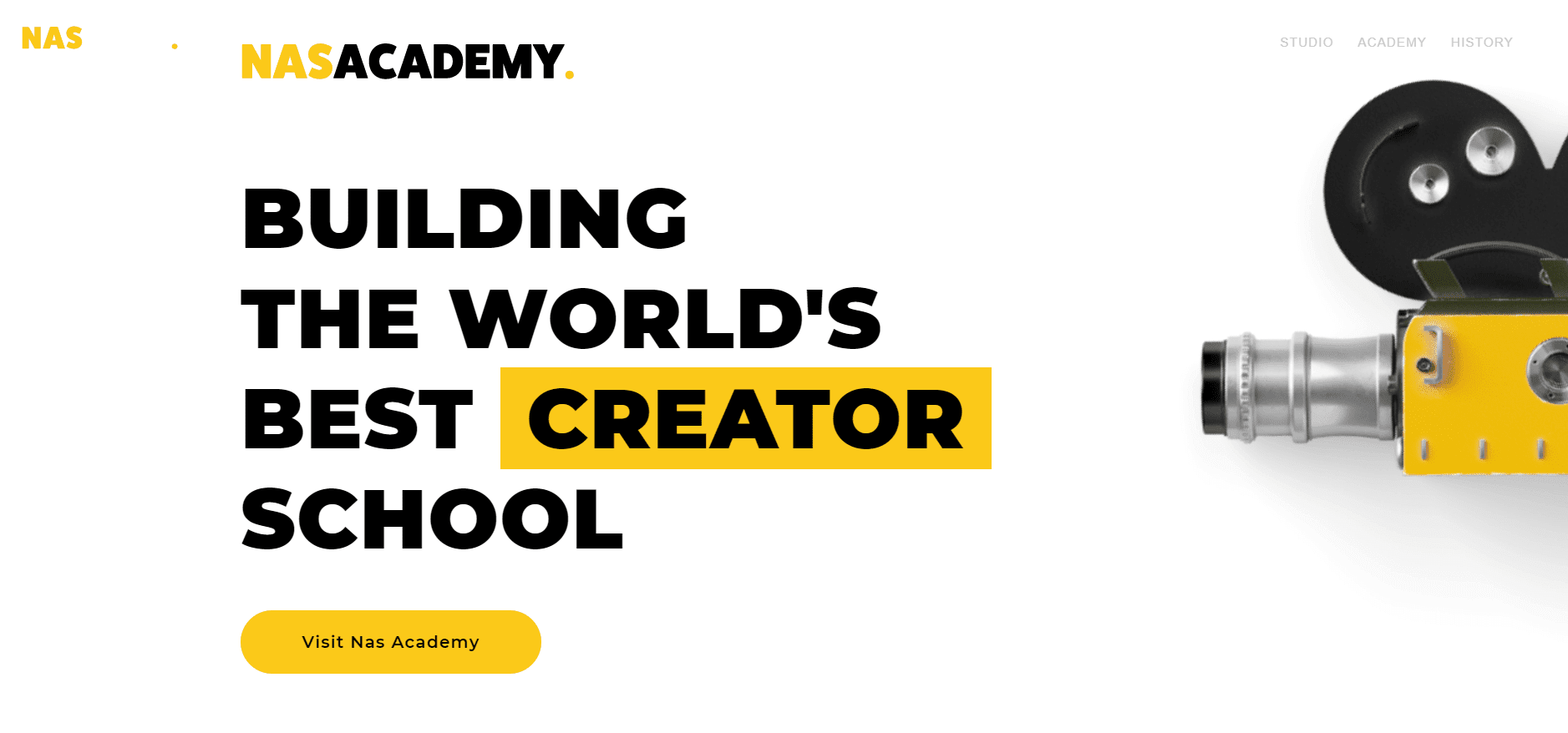
Step 14. Learn Tracking and Reporting
Whenever you start a project, there are some KPIs your content needs to achieve. You and your client need to agree on the performance parameters, which will decide if the project was successful as expected. For example, one measurable KPI could be an increase in website traffic by 10%.
Once a project goes live, you need to track your content’s performance and report it to the client. You should also be able to analyze all the data to know how your content fared. Based on that data, you can improve your content, strategy, or distribution to achieve the expected results.
Most companies use Google Analytics to track their content performance. You can learn Google analytics and even get a certification from Google for free.

Who Needs a Content Creator
Content is the driving force behind any brand’s success. Those who want to increase their online visibility, rank for relevant keywords, and generate quality leads need content creators.
Corporations, organizations, small and medium businesses, and individual influencers need quality content to win the online game.
Everyone today knows that a sound long-term content strategy is crucial for a sustained online presence. Most businesses understand the importance of connecting with their audience. Historical data proves that companies can build strong relationships with their customers through carefully created content.
Due to the abundance of options, consumers can face a choice overload and will appreciate businesses that put out valuable content that helps them navigate their choices in helpful and credible ways.
Similarly, influencers who depend on their followers, engagement, and other metrics to drive revenue through ads and collabs need to publish content consistently.
People in every field should understand the importance of personal branding. But, not everyone is adept at creating content that can strike the right chord with their audience. That’s where you, the content creators, come in.

Reasons You Need a Content Creator
Businesses need content to scale their efforts and reach their goals. Without content, they have no means to reach and connect with their audience.
Here are four main reasons why you should consider hiring content creators for your business.
Quality Content is Crucial For Building Brand Image
You need both blogs and visuals to convey your story to your audience. Your story, your WHY, tugs at people’s emotions and will make them gravitate toward your brand. Consuming your goods and services not only solves their problems but makes them happy because they know and agree with what you stand for.
Content creators know how to use words and images to create a brand image that highlights your brand’s uniqueness. Expert content creators are well-versed in using the power of words and psychological cues that motivate your audience to take action.
Content Connects You With Your Target Audience
Whether you choose to write a personal story or discuss possible solutions to address your audience’s pain points, content allows you to connect with your audience.
Good copy makes your audience excited to work with you and empathetic to your cause. It shows your followers that you understand them and care for them. Expert content creators have the right skills to convey your core purpose in words your audience can understand and relate to.
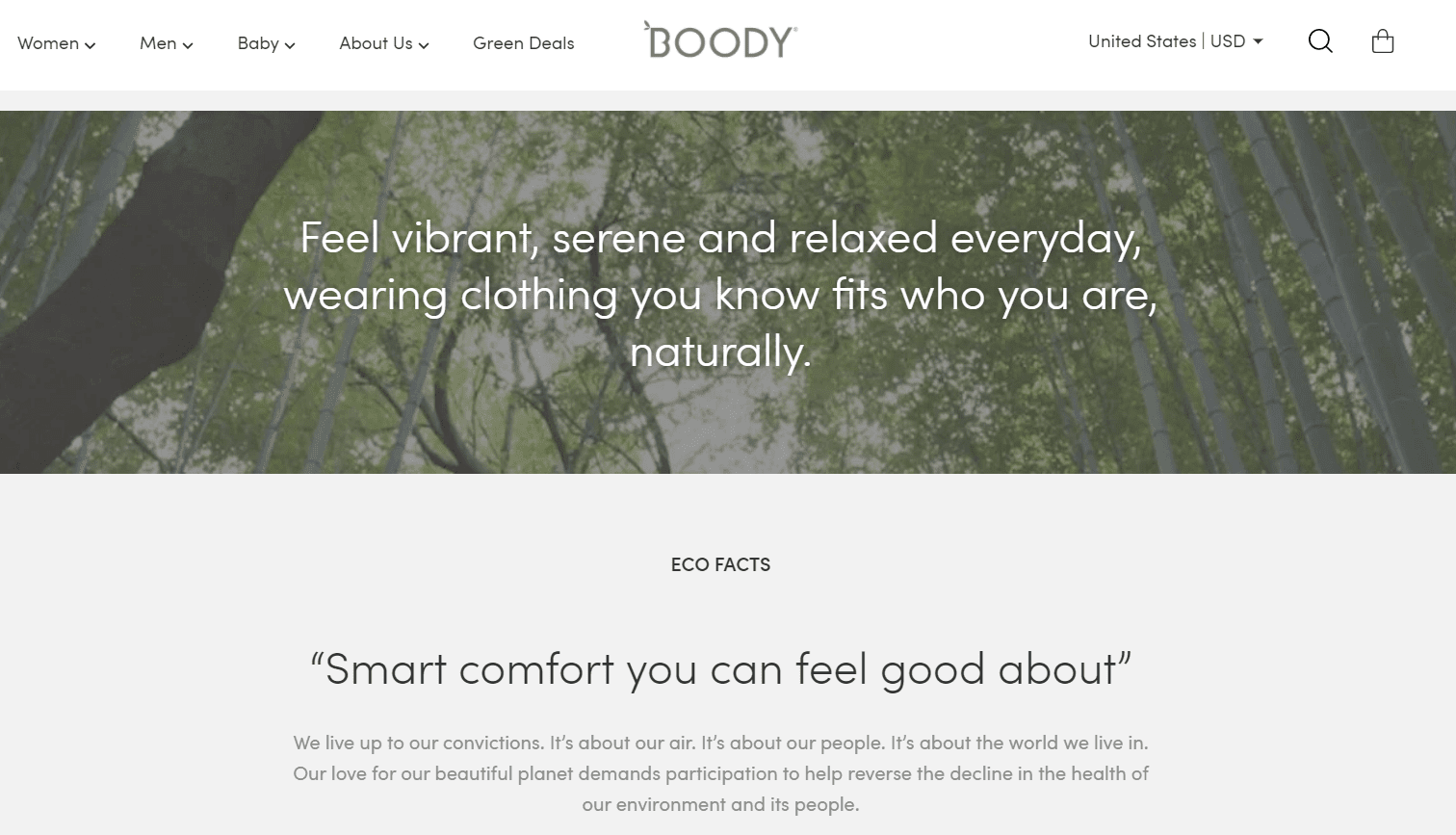
For example, Boody is a sustainable activewear brand that’s all about peace and comfort. Their ideology reflects in their content quite accurately.
Content Establishes You As An Authority In Your Niche
When you publish quality content consistently, you can position yourself as an authority in your niche. Content creators stay on top of audience expectations and industry trends. They understand which topics will resonate with your target audience and can create helpful content that solves people’s problems and increases their knowledge.
With the right kind of content, your audience begins to see you as an expert. At the same time, innovative and forward-thinking content strategy establishes you and your company as leaders in your industry.
Content Is a Great Way to Catch Organic Traffic
The most sustainable way to increase traffic to your business is to make sure it ranks and appears at the top of the search results. In order for your content to rank, it needs to…
- Be keyword-optimized, high-quality content.
- Have high-authority backlinks pointing to it.
Content creators are experts who create blogs and visuals that are valuable to your community and optimized for search engines. If your goal is to obtain links organically from Google, a content strategy needs to be a part of your plans.
The responsibility of connecting the target audience with a brand and providing value to both lies on the content creator’s shoulders. Content creation is an art, and you can learn it by consistently following the 14 steps mentioned above.
Karli is content marketing consultant behind Wild Idea, a content marketing and SEO collective focused on driving big results. With over 12 years in the marketing industry, she’s worked with brands large and small across many industries to grow organic traffic and reach new audiences. She writes on everything from marketing, social, and SEO to travel and real estate. On the weekends, she loves to explore new places, enjoy the outdoors and have a glass or two of vino!






